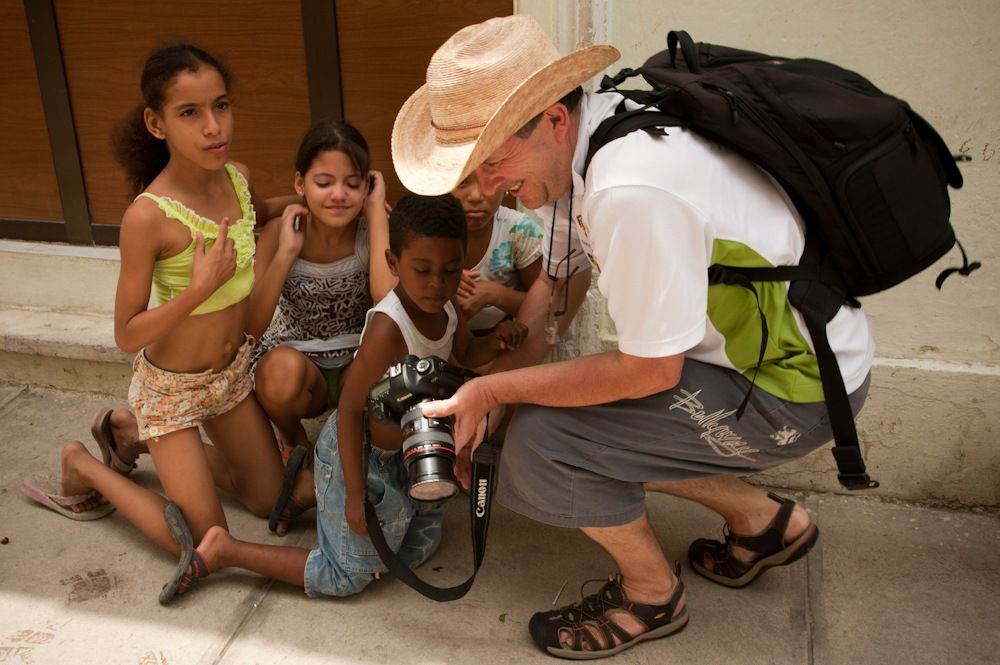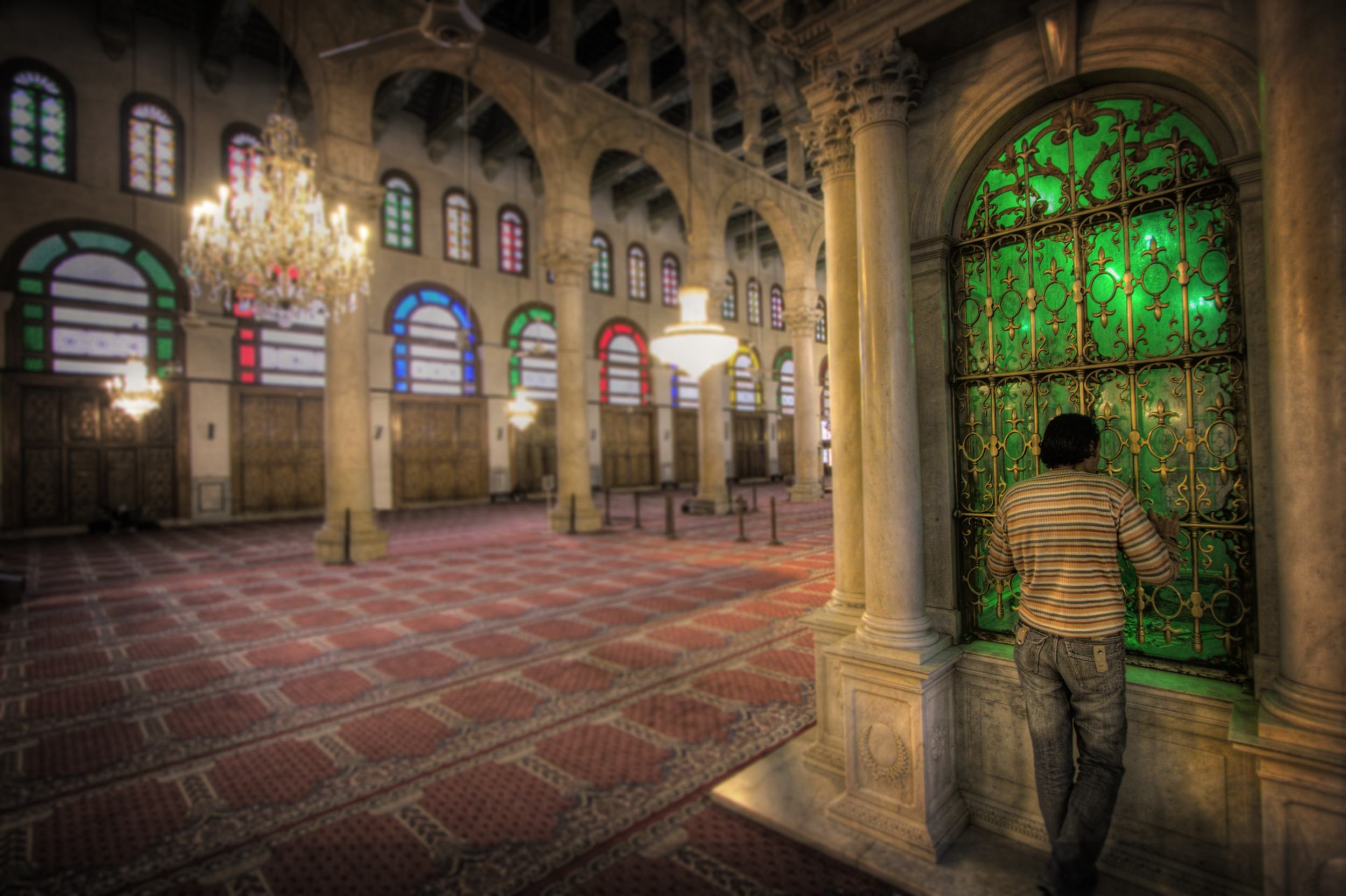“Do you have any tips on how to photograph strangers?”
This is a question I get asked quite frequently. Unfortunately, there’s no easy answer; though my usual reply is to ask them to think how it would feel if a stranger casually walks up to them in the street and takes a snap without warning, or asking permission.
Would they feel a bit annoyed? Has that person intruded into your personal space or, as happens often in the West, do you wonder why this person is shooting pictures of you, and do you begin to suspect darker motives, especially if children are present in the image?
What you’ll learn in this article:
- How to approach total strangers for a picture
- How to get more from your subject
- What to consider in terms of preparation
- The best lens to use
- Using a model release
- What NOT to do when shooting in the street
- Tips from a master of street photography, Garry Winogrand
Recommended Reading: If you’d like to learn how to create amazing portraits, grab a copy of Photzy’s premium guide: The Art of Portrait Photography
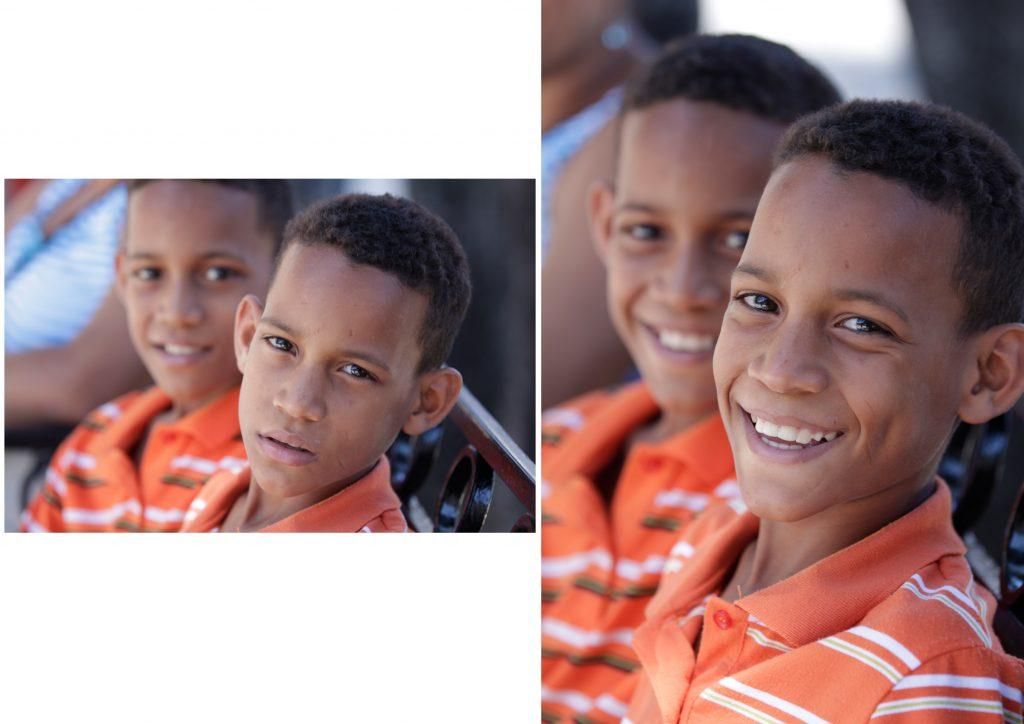
It’s not hard to pull a face or make a silly comment. I asked the mother of these two boys sitting next to me in a square in Eastern Cuba if I could take a snap of her boys. It wasn’t a problem, but my Spanish certainly wasn’t good enough to tell them what I wanted. The first shot was a washout – framing and energy were wrong – so I reframed the image vertically and pulled a face, which had an immediate reaction with the kids. And I got a better shot. Photos by Robin Nichols
You don’t even need a ‘proper’ camera to upset your potential subjects. Even in a multi-cultural country such as Australia, you can easily step over invisible cultural and religious barriers simply by pointing your smartphone in the general direction of a stranger. Try this with a big DSLR fitted with a telephoto lens and you’ll certainly create a big fuss, and rightly so.
But travel overseas and I think our attitudes to snapping locals experiences a slight morality change. I suspect that, in general, the poorer that society is, the less likely we are to worry about sneaking shots of locals in, say, markets, in the street, and even in places of worship (something we’d [probably] never consider doing in our own countries).
You don’t even need a ‘proper’ camera to upset your potential subjects... You can easily step over invisible cultural and religious barriers simply by pointing your smartphone in the general direction of a stranger.
I can’t explain exactly why we might let our collective sense of privacy slip when traveling overseas, but it does happen. It might be because we feel separated by language, by class, or even by social position. For example, if our subjects are poor, we might consider that they are less likely to complain, and are certainly never going to make much of a fuss over a street photo unless you make an obvious nuisance of yourself. In some countries, notably India, the rigid caste system might even restrict the lower levels of society from complaining to foreigners invading their space with cameras.
On the flipside to this, I’ve been in several situations where locals have, quite out of the blue, invited me into their homes and places of worship to take pictures. One memorable occasion was a visit to the Umayyad Mosque in Damascus. This is considered the fourth most holy place in Islam and yet the locals invited me in, complete with large camera and tripod, and were perfectly happy for me to wander about snapping away without restriction. On that occasion I was careful not to photograph worshippers out of respect for their privacy – a self-imposed rule all photographers need to adhere to – but spent the rest of the evening photographing in this magnificent building, unhampered by over-zealous security staff. There’s no way I’d be able to do this in my local cathedral without going through an endless application process.
Avoiding Confrontation
Many years ago my mum, a talented painter, took up photography, mostly to fit in with the rest of our camera-mad family. She loved taking candid portraits, especially in one of her favorite holiday destinations, Greece. Being British, she always felt too shy to actually approach her potential subjects and ask them to take a picture. Most of them would probably only speak Greek anyway, which made it doubly hard to get natural-looking poses of complete strangers.

I personally don’t recommend the right-angle attachment for candid portraits because it’s tricky to use, even with an internally-focusing lens. I always advocate for the direct approach, with the right lens for the job already in place: Nikon’s 85mm f1.8 lens is a real beauty for portraits, as is the more affordable 50mm f1.8; while street shooters might want something wider, like this f2.8 28mm lens from Canon. (Note that most lens manufacturers produce similar focal length products.) Photo by Robin Nichols
Trying to solve the problem, a salesperson in a local camera shop sold her a right-angled eyepiece attachment. As the name suggests, this attaches to the eyepiece of a DSLR and enables you to view the scene at right angles to the normal point of view. It’s an ideal gizmo for anyone using a copy stand or attaching the camera to a microscope, but it’s just plain dangerous for a 70-year-old woman trying to take shifty shots in a Greek taverna!
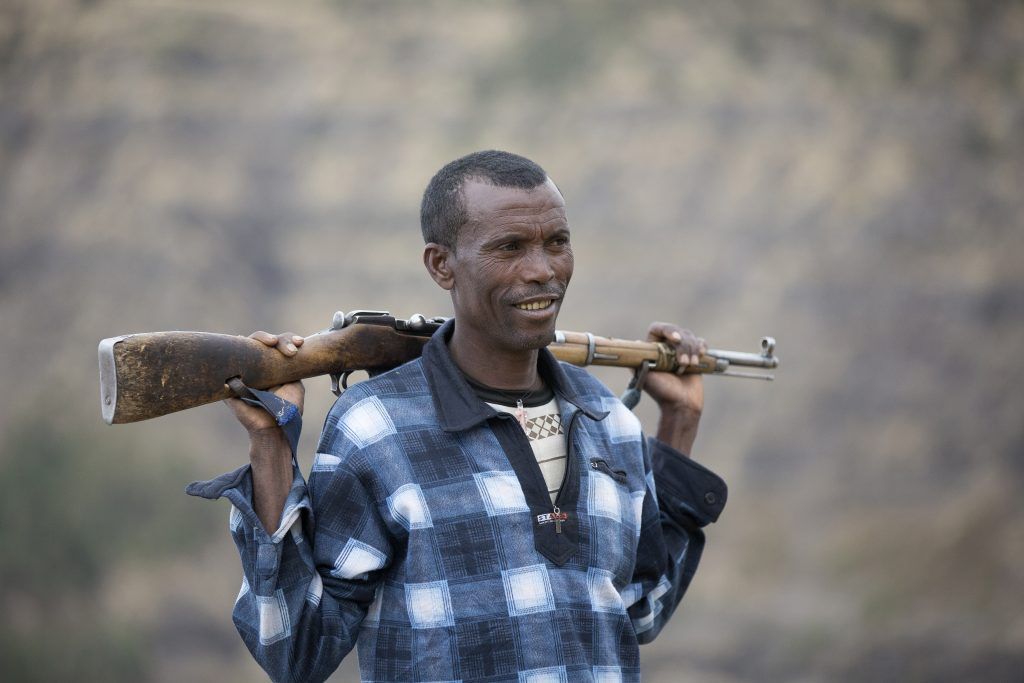
Although I advise NOT photographing people in foreign places with guns, this fellow was actually hired by us in case we met wolves on our walk into the Simien Mountains in Ethiopia. Or at least that’s what we were told. I used a 70-200mm lens (at 200mm) and an aperture of f2.8 to defocus the busy mountainous background from the subject. Photo by Robin Nichols
The camera shop’s next suggestion was to use a right-angle lens attachment for her favorite lens. But once again she ran into trouble with that solution simply because, in those days, there were few internally-focusing zoom lenses, which meant that when she stood at right angles to her [potential] subject and focused, the entire lens attachment rotated with the lens barrel and she’d come away either with a shot of her foot or a patch of blue sky; never, it seemed, an image of the real subject who was sitting in the café not six foot away, blissfully unaware of the covert attempts to capture his image photographically. She never went back to that shop again.
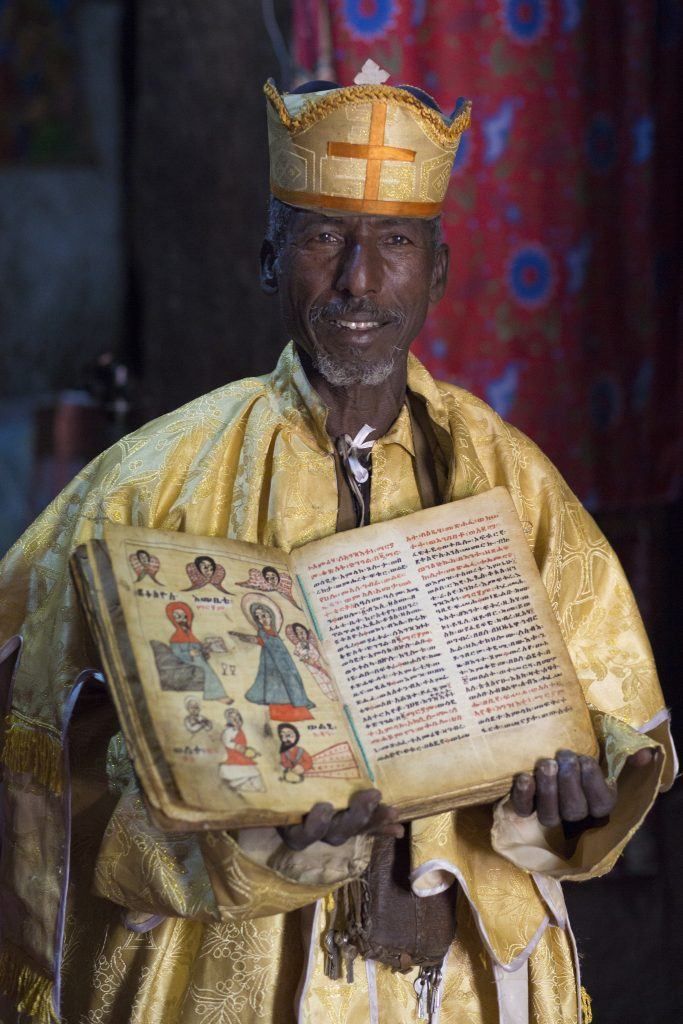
I advise photographers to be culturally aware when photographing local people, at home and abroad. The majority religion in Ethiopia is Christianity, and its advocates, however poor, are intensely proud of their history. Here a priest in one of the numerous rock-hewn cave churches of Lalibela proudly holds his illustrated Holy Book open for us to photograph. I specifically avoid paying people for photos like this directly, but always make sure I leave an [anonymous] donation in the collection box before moving on (85mm lens, 1/40s @ f3.2, ISO 1600). Photo by Robin Nichols
Super-Zooming is Not the Answer
Over the years I have had clients who were also trying to use technology to get around the sometimes scary reality of physically approaching a potential photographic subject. I guess no one wants to be refused when you ask a person for a photo.
One common answer to this problem is to remain anonymous by standing at a distance from the subject and using a superzoom lens. There are plenty of mid-range cameras around featuring the equivalent lens magnification of 500mm, 800mm, and even higher. But though this sounds like an ideal way to capture candid photos from the safe anonymity of distance, using such massive magnification lenses introduces a range of negative quality issues such as camera shake, poor focus, and the associated loss of quality when shooting with a camera with a physically small sensor.
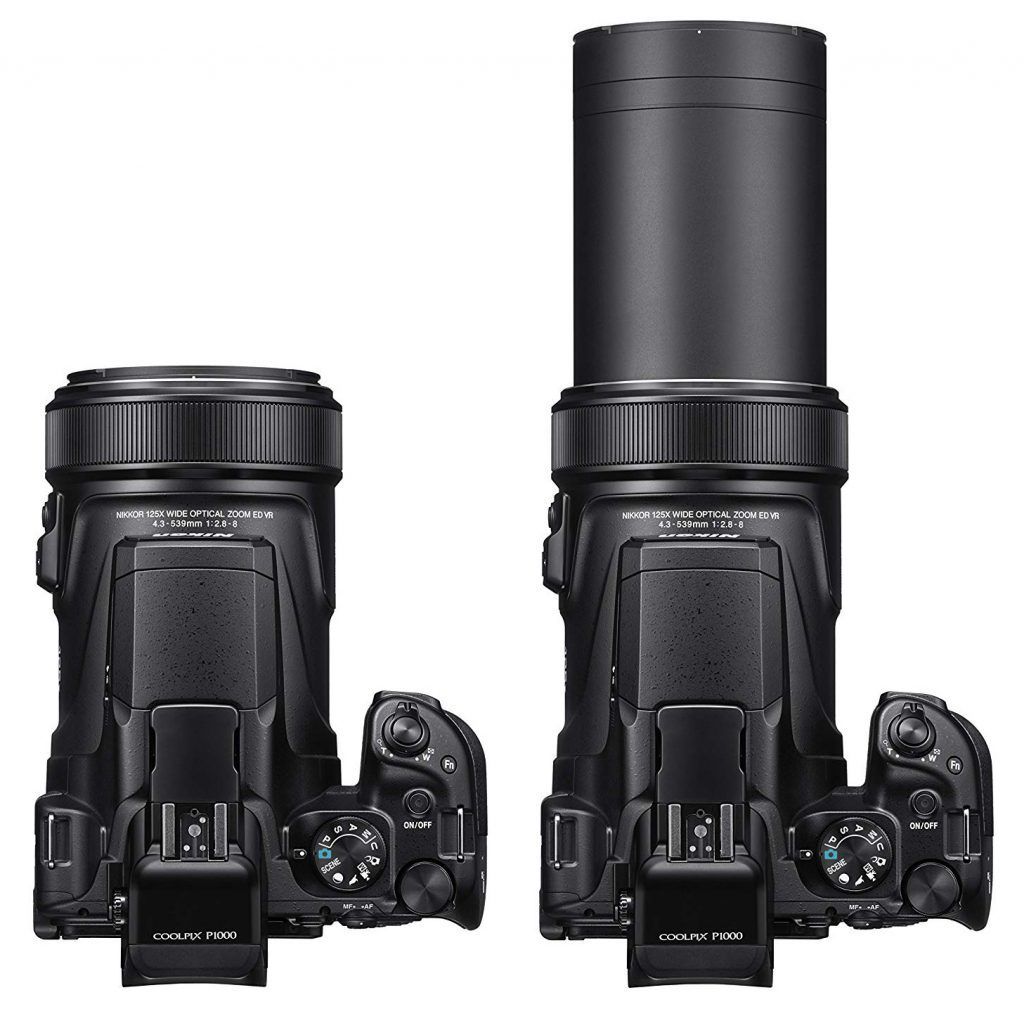
Nikon’s latest superzoom lens produces a staggering 125X (3000mm equivalent) magnification, but at that magnification you’d be hard-pressed to get a sharp, shake-free result. Sure, you can be a hundred meters away, shooting close-ups discreetly, but you have to contend with lens shake, heat haze, pollution, objects moving into or across the frame, and a small sensor. It is amazing technology, but don‘t be fooled; it’s never going to produce a better result than if you actually talk to your proposed subjects first and shoot closer. Photo by Robin Nichols
Rejection is often hard to accept, especially if you assume that because you are a rich visitor to a poor foreign country you somehow have a right to take snaps of the locals.
Recommended Reading: If you’d like to learn how to create amazing portraits, grab a copy of Photzy’s premium guide: The Art of Portrait Photography
Top Tips for Photographing Strangers
- Always ask a person if it’s OK for you to take a snap.
- Asking in their language, however bad your accent, gives you a much better chance of success. Maybe learn one or two sample phrases in the local language. It can’t hurt.
- Be photographically prepared before you approach a subject (i.e. work out the exposure and even the lens choice beforehand).
- Always show the subject the result of your shot on your camera’s LCD screen.
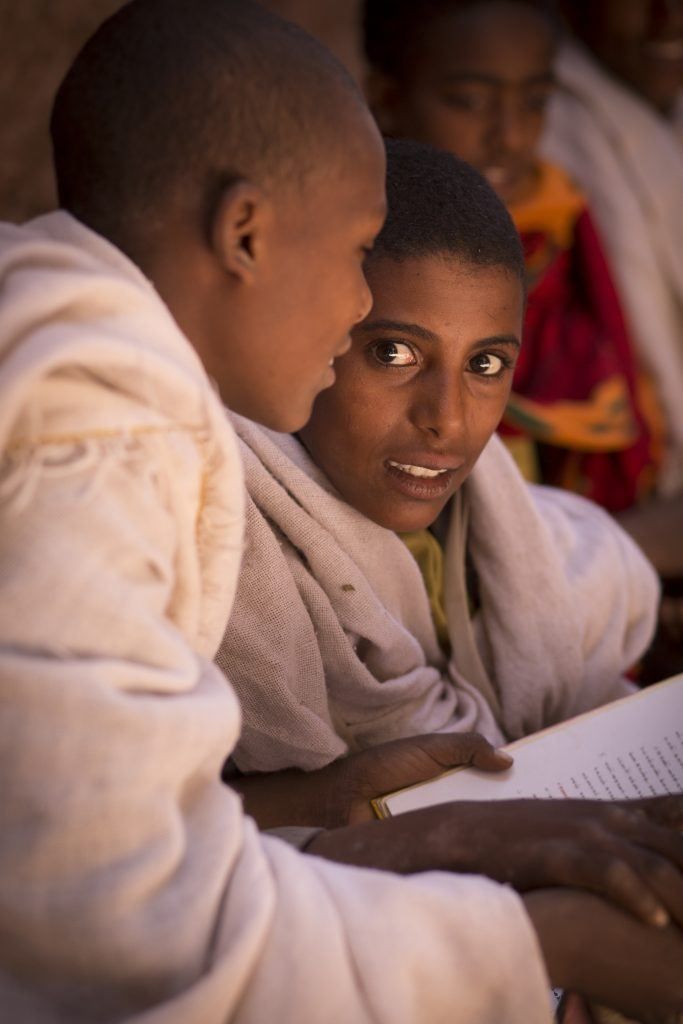
- I often try to email a copy of the portrait to the subject (some folk even travel with small printers or an instant camera to hand over a picture on the spot).
- If shooting a group of people, treat them with respect but try to be firm if you think you need to move them into the best light.
- Always be respectful to your subjects.
- If you are shooting in a market, for example, it often pays to buy something from a market stallholder before asking to take a photo. They get something in return for your shot. (TIP: Best not try this in a Tesla car showroom or a diamond merchant!)
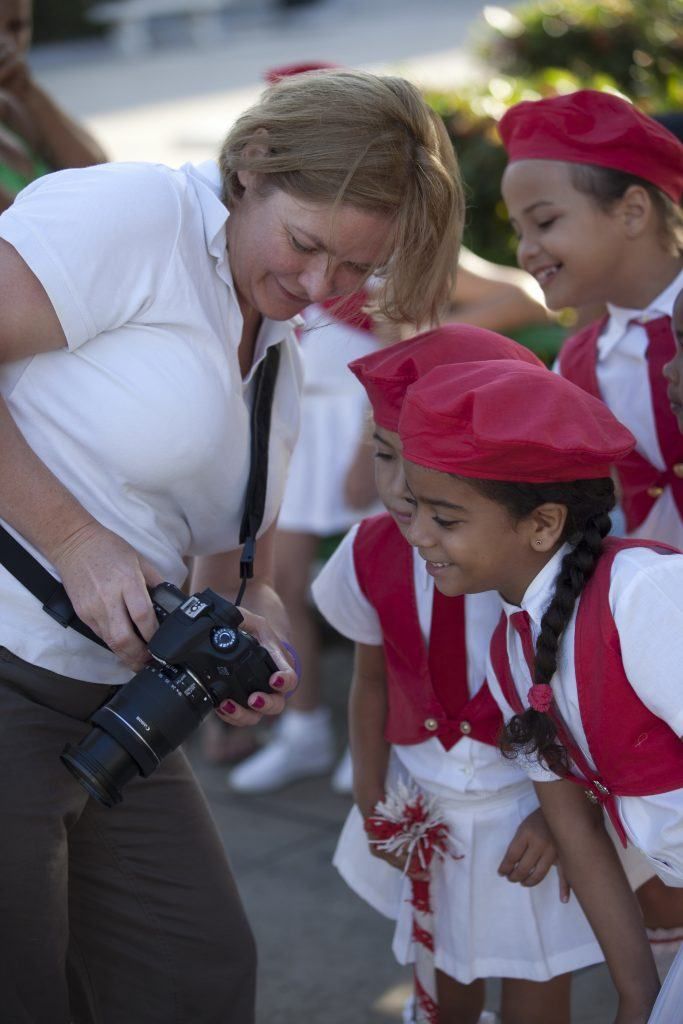
Showing your subjects the result of your endeavors on the LCD screen is a great way to break the ice. As you can see in this example, these Cuban schoolkids were getting a thrill at seeing their portraits on my wife’s camera. Photo by Robin Nichols
- Try shooting in high-speed sequence mode to get multiple images in case they happen to blink or twitch just when you press the shutter.
- A wide-open aperture setting (i.e. f4) will help diffuse distractions in the background.
- Best focal length (equivalents) for portraits is between 50 and 135mm.
- If you have any commercial aspirations for your images, get a model release signed by the subject. Either carry printed releases or download one for your smartphone, like Easy Release.
Note: Here’s a sample model release form you can print out: Model Release
Street Photography
Now take one of America’s greatest street photographers, Garry Winogrand (1928–1984). For me he’s one of the best street photographers ever – essentially a freelance photojournalist, teacher, and advertising photographer who used the income from those jobs, plus numerous grants from institutions like the Guggenheim in New York, to finance his street photography projects.
When he died, his estate was found to have 2,500 rolls of exposed, but unprocessed film, 6,500 rolls of developed film, and 3,500 rolls of film that had been developed and proofed, but not edited. That’s a lot of photography for a film shooter – nearly half a million images.
What was extraordinary about Winogrand’s technique was that he deliberately went out to get in people’s way, walking through a small group of people rather than around them and shooting remotely, not looking through the viewfinder. He’d often not get the shot, miss the composition entirely, or just create a series of unusable, blurry images. But the ones he succeeded in capturing were impressive, often startling documents of life in New York in the sixties.
“Great photography is always on the edge of failure.” – Garry Winogrand
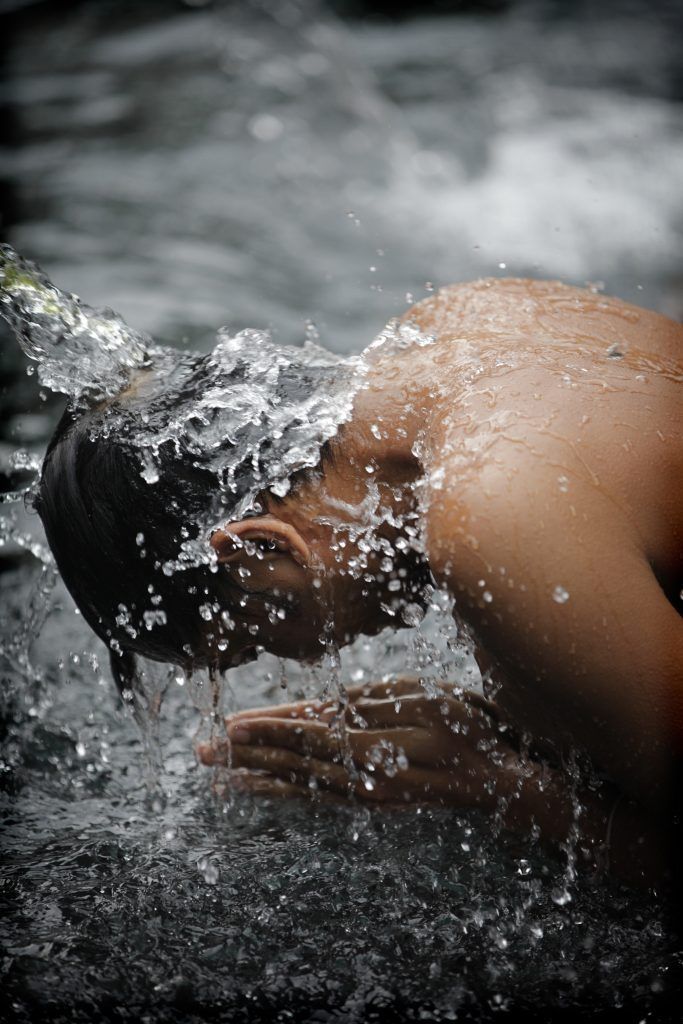
Even though I could have snapped this shot without asking, I waited until I had eye contact and then asked if it was OK. I was watching a Balinese ceremony where most of the pilgrims purified themselves in the temple fountains, making for a spectacular portrait opportunity. I actually sat in this position for more than 30 minutes watching the process so the locals got used to seeing me observing from the sidelines (Tirtaganga temple, Bali. 70-200mm lens (at 200mm), 1/800s @ f2.8, ISO200). Photo by Robin Nichols
Top Tips for What Not to Do When Photographing Strangers
- Shooting and running – it rarely works.
- Snapping from a distance with a big magnification superzoom lens. Rarely does this work, plus you have to contend with camera shake, unsharp focus (often found on superzoom lenses), and too much in-camera processing.
- Ignoring your subject’s wishes. If they are not happy being photographed, don’t do it! Read the body language.
- Snapping police, security, or armed forces personnel.
- Photographing ‘official’ buildings, or anything with razor wire around it.
- Handing over money for a photo, unless you really think the circumstances demand it. I have seen the attitude of locals in many countries change over the years, demanding more and more from a photographer for a street snap. Because tourists first gave them a school pen, in a couple of years it might have increased to demands for local currency, then a few years later it’s going to be a demand for US dollars! Bear in mind that in some countries, begging from tourists, and especially where amateur photographers are concerned, is a job. Paying kids for photos is ultimately a huge disservice because it encourages them not to go to school.
I see street photography as being one of the most creative ways to capture the essence of a place. And of course, with digital, the fact that you don’t always know what you are going to get can add to the excitement.
I see street photography as being one of the most creative ways to capture the essence of a place.
The key thing to remember when snapping strangers is to be polite, respectful, and up tempo with your approach. If the person says “No!” it’s not the end of the world; move on and find more agreeable subjects.
Recommended Reading: If you’d like to learn how to create amazing portraits, grab a copy of Photzy’s premium guide: The Art of Portrait Photography
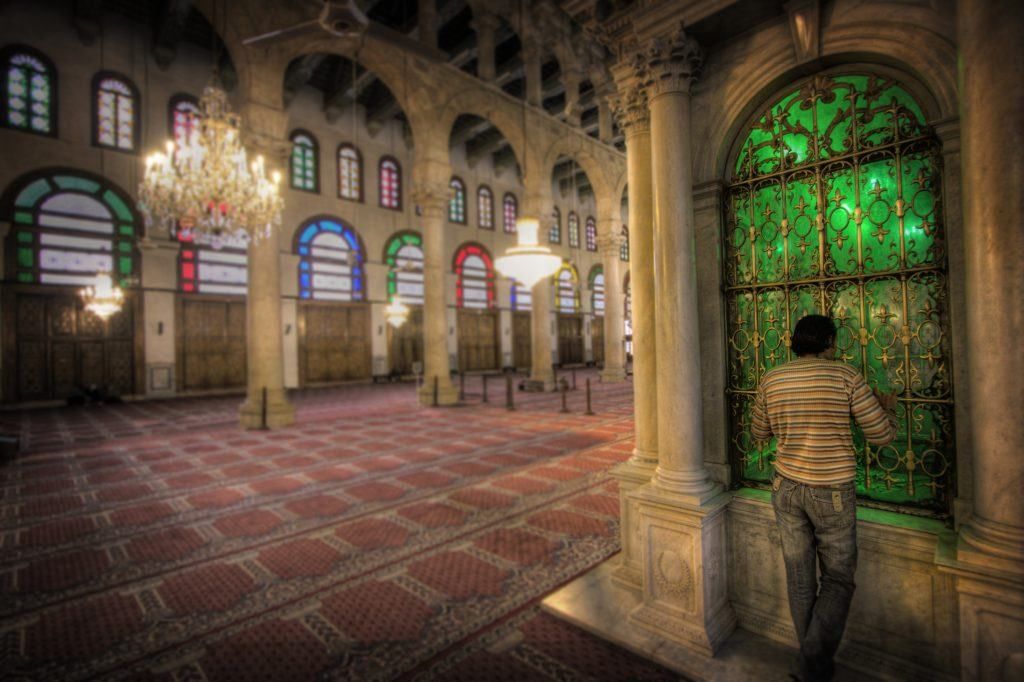
In Syria, in the days when it was possible to travel there safely, I was amazed that no one objected to my taking pictures inside this mosque in Damascus. In fact, all I had to do was ask, and people happily agreed to my snapping a picture of them or their family. Here’s a young man pressed up against the window to what is supposed to be the tomb of John the Baptist in the Umayyad Mosque in Damascus (1/12s @ f5, ISO 400). Photo by Robin Nichols
Photo Techniques for Better Portraits
If you spot someone you’d like to take a picture of, firstly stop and observe.
- Look at their location in relation to the environment, background clutter, and illumination. If it is all too busy and poorly lit, it might be better to just enjoy the moment.
- Consider what the best angle might be to get the snap.
- Look at where the light is coming from. Can you shift your potential subject to a better lit spot?
- Often acting the funny guy/girl can relax your subjects, especially kids.
- Select your best lens for the job before you approach a subject (my favorite lens has to be the Canon 85mm f1.8 lens).
